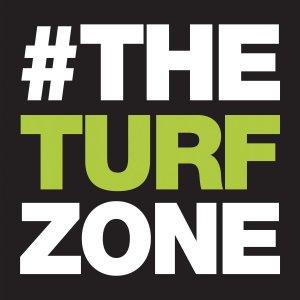The Turf Zone Podcast

Turfgrass Council of North Carolina – Musser Turfgrass Award Winner Takes All
North Carolina Turfgrass – Jennifer Howard
“It’s the highest honor for a graduate student studying turfgrass science to be recognized by this award,” 2021 Musser Foundation Award of Excellence winner Cameron Stephens said. “It’s like the Heisman for turfgrass science graduate students.” Stephens is a recent NC State Plant Pathology and Crop and Soil Sciences alumnus with deep expertise on a growing problem for golf courses – take-all root rot (TARR).
An Emerging Disease In Play
TARR is a fungal disease affecting ultradwarf bermudagrass, commonly used on southeastern U.S. golf putting greens. The disease appears throughout the growing season and manifesting itself as white to off-color patches that may decline under stressful abiotic conditions due to the severely compromised root system.
It’s an emerging disease, one of the most frequently diagnosed in NC State’s Turf Diagnostic Lab. TARR is of agronomic and economic importance. It impacts golf course aesthetics and playability but is frequently confused with nematode damage and Pythium root rot, both of which are managed differently. Misdiagnosis can lead to improper management strategies which may result in economic loss, along with unnecessary chemical use.
Research With Immediate Impact
Stephens’ recently completed doctoral research was dedicated to understanding TARR. “We’ve learned that this disease is caused by multiple pathogens – up to five now that researchers have identified. It’s a complex disease. We are working to understand the disease’s dynamics which will impact our management recommendations – like which fungicides are effective, the optimal timing for fungicides treatments, and best post-application practices to target soilborne diseases.
Learning from Stephens’ research has already led to earlier season treatment recommendations. “TARR has typically been managed curatively in the fall, but we’ve found these pathogens are most active in the summer. Fungicides applied in late-July to early-August in our area result in the best TARR suppression” Stephens said. “But it’s just the tip of the iceberg. There are only a handful of researchers working on this disease and there’s so much more to learn.”
Supporting Turfgrass Education
The Musser International Turfgrass Foundation was created to foster and support turfgrass education and research at the highest level. Annually they bestow their Award of Excellence upon a Ph.D. candidate who has demonstrated excellence throughout their doctoral studies in an area of turfgrass research. Recipient selection criteria include graduate work, academic record, publications and leadership as well as extracurricular activities.
A Legacy of Excellence
Stephens is the fifth recipient from NC State since the award’s inception in 1989. “Earning this prestigious award has been a professional goal of mine since I began studying turfgrass science as an undergraduate at Ohio State,” Stephens said. “So many people made this possible for me, from all the people I’ve worked with at Ohio State, Clemson, Penn State, and NC State. This award is a testament to my advisors, mentors, and lab mates who propelled me in my career.”
Travis Gannon and Jim Kerns co-advised Stephens in his doctoral work. “Dr. Cameron Stephens is a talented researcher that completed a very intricate project requiring a comprehensive understanding of multiple facets including fungicide fate, transport, and efficacy.”
Kerns agrees. “Cameron’s Ph.D. research has dramatically improved root disease management in turfgrasses, especially take-all root rot. I am exceptionally proud of all he has accomplished in his work. He is an excellent researcher, but more importantly a wonderful person,” Kerns said.
The Next Round
After successfully completing his doctoral work this spring, Stephens has already teed up what’s next. He is already working with BASF in the Research T...






 Visit Podcast Website
Visit Podcast Website RSS Podcast Feed
RSS Podcast Feed Subscribe
Subscribe
 Add to MyCast
Add to MyCast